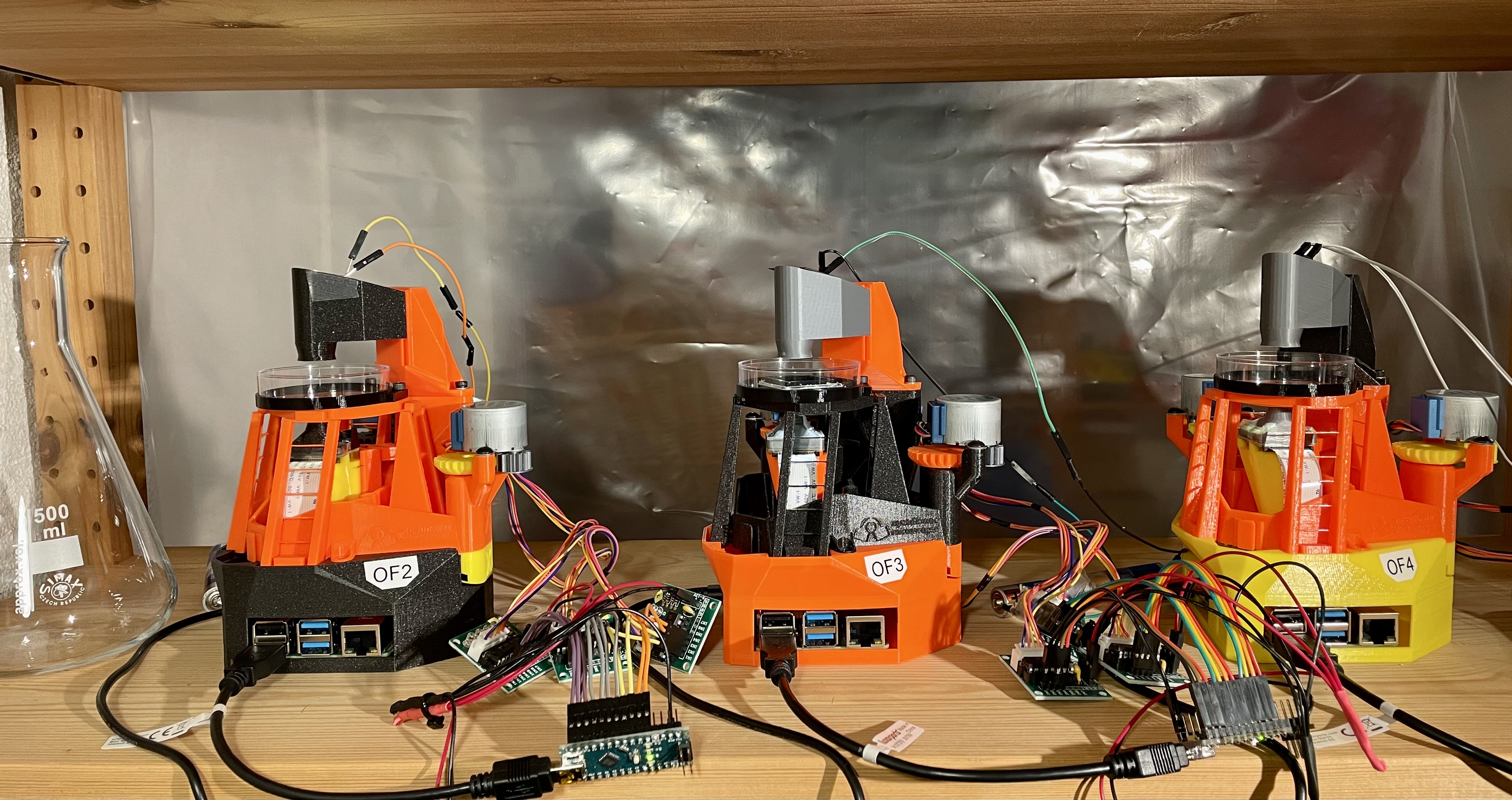This project employs the OpenFlexure Microscope (OFM). OFM is an open-source microscope, meaning that the 3D schematics for the structural parts and assembly instructions, using off the shelf electronics, are openly available. The OFM is developed by the Bath Open INstrumentation Group (BOING) for the purpose of “making microscopes and micromanipulators, with precise mechanical positioning, available to anyone with a 3D printer”.

|
The OFM structural parts can be printed in ~24h (using one printer). The cost of all material needed to build a microscope ends up around 3,000SEK (plastics, electronics and optics included). An experianced builder can put together a microscope in ~1h. More information about bulding your own microscope can be found here . Since it is completely open source it is highly customisable making it possible to employ the microscope for many different applications. The OFM makes it possible for us to simplify the photography of aquatic samples. Here is a simplified user manual describing how to operate the microscope. |
This webpage, with all its contents, is to be considered under construction and not a final product.